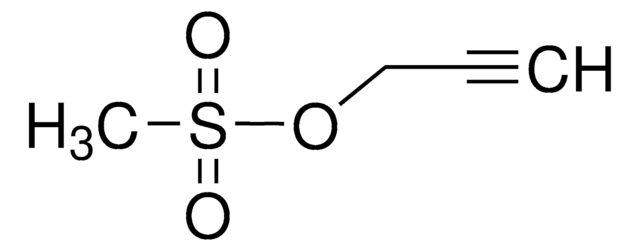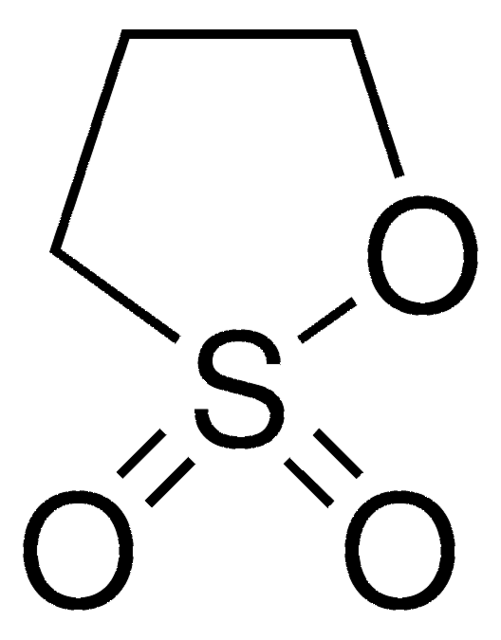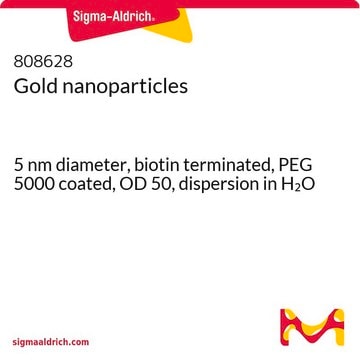795399
Gold nano-urchins
60 nm avg. part. size, in 0.1 mM PBS
Synonym(e):
Gold nanoparticles, Non-functionalized gold nanoparticles
About This Item
Empfohlene Produkte
Beschreibung
Molar Concentration: 3.25E-11
Molar Ext: 3.07E+10 ()
Particle Volume: 1.13E5 nm3
Particles:∼1.96E+10/mL
Size Dispersity: <10%
surface area: 1.13E+04 nm2
Qualitätsniveau
Assay
>95% (reactant free)
Form
dispersion
nanourchin
Oberflächenbereich
1.13E+04nm^2
Durchschnittliche Teilgröße
60 nm
pH-Wert
6-7
λmax
585 nm
Lagertemp.
2-8°C
Suchen Sie nach ähnlichen Produkten? Aufrufen Leitfaden zum Produktvergleich
Anwendung
Lagerklassenschlüssel
12 - Non Combustible Liquids
WGK
nwg
Flammpunkt (°F)
Not applicable
Flammpunkt (°C)
Not applicable
Hier finden Sie alle aktuellen Versionen:
Besitzen Sie dieses Produkt bereits?
In der Dokumentenbibliothek finden Sie die Dokumentation zu den Produkten, die Sie kürzlich erworben haben.
Kunden haben sich ebenfalls angesehen
Artikel
Biomaterials science integrates smart materials into biological research, requiring a deep understanding of biological systems.
Active Filters
Unser Team von Wissenschaftlern verfügt über Erfahrung in allen Forschungsbereichen einschließlich Life Science, Materialwissenschaften, chemischer Synthese, Chromatographie, Analytik und vielen mehr..
Setzen Sie sich mit dem technischen Dienst in Verbindung.











